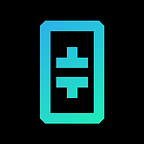Theta Fuel — The operational token of the Theta Network
As we get close to the Theta mainnet launch on March 15th, 2019, we are launching one the most important parts of the Theta protocol — the operational token, which will be known as Theta Fuel (TFUEL). Theta Fuel is a 2nd token in the Theta protocol that works in conjunction with the Theta Token (THETA) that exists today.
If you’re just learning about the Theta Network, here are some FAQs on Theta Fuel and how it fits in to the Theta Network:
What’s the difference between the Theta Token and Theta Fuel?
Theta Token (THETA): The governance token of the Theta protocol. THETA is used to stake as a Validator or Guardian node, contributing to block production and the protocol governance of the Theta Network. By staking and running a node, users will earn a proportional amount of the new TFUEL generated. The supply of THETA is fixed at 1 billion and will never increase.
Theta Fuel (TFUEL): The operational token of the Theta protocol. TFUEL powers on-chain operations like payments to relayers for sharing a video stream, or for deploying or interacting with smart contracts. Relayers earn TFUEL for every video stream they relay to other users on the network. You can think of Theta Fuel as the “gas” of the protocol. At Mainnet launch on March 15th, TFUEL will be created as a native token on the Theta blockchain.
How will Theta Fuel be generated? At what rate?
The genesis distribution of Theta Fuel will happen when then Theta mainnet launches on March 15th. For each THETA that you hold when the Theta Mainnet launches, you will also receive 5 TFUEL to seed the ecosystem. To ensure you receive this initial distribution, make sure to follow our mainnet token swap procedures.
After the initial distribution of 5 billion TFUEL (5 for each of the 1 billion THETA), the supply will increase at an initial annual target rate of 5%. The new supply rate will be determined at the protocol level, and can be adjusted as needed by protocol consensus to provide the appropriate amount of new supply as demanded by platforms on the Theta Network. Each network participant running a Validator or Guardian node will earn part of that new supply of TFUEL, proportional to the amount of THETA they are staking.
Will each viewer need to pay TFUEL to pull video streams on the Theta Network?
Technically that’s true at the protocol level, but the actual model implemented on SLIVER.tv, and our initial partners like MBN and Samsung VR, is that the cost of TFUEL falls on the video platform. Platforms subsidize users with the TFUEL necessary to pull video streams from relayers on the Theta Network. This makes sense, because video platforms are the ones most directly gaining from getting more viewers to pull their video stream from the Theta Network, in the form of lower CDN costs and higher user engagement. We think it’s critical that the end-user never has to go out and purchase any TFUEL tokens just to watch videos on the Theta Network — it’s just too much of a friction point for adoption.
Why introduce a second currency at all?
There are two key reasons to introduce a second token:
- First, this allows the utility and purpose of each token to be separated. THETA is used strictly for staking and securing the network, while TFUEL is used to power microtransactions and operations of the network. This is necessary because staking inherently decreases circulating supply, but video relay transactions and smart contracts will require a highly-liquid token that can facilitate millions of daily transactions.
- Second, two tokens are needed to solve governance issues that arise from using the same token for staking and operations. Because the token used for operations must be liquid, it would be easier for a malicious actor to accumulate a significant number of that frequently-traded token on the open market. If that same token is also used for staking, they could potentially threaten the security of the Theta Network by quietly acquiring a large amount of the staking token. By separating the two functions (staking and operations) into different tokens, that risk is greatly decreased.
That’s a lot to take in a once if you’re new to the project! We’ll continue to update these FAQs as questions arise. To take a deeper dive, check out our white paper. Feel free to also join us in our Telegram channel to discuss with the Theta team!
